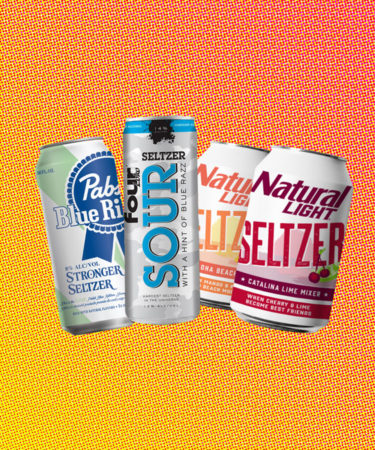It’s been a bonkers week for hard seltzer. On Monday, Natural Light and Pabst Brewing both announced the launch of their own hard seltzer brands. Natural Light Seltzer will come in two flavors at 6 percent ABV; and Pabst Blue Ribbon’s Stronger Seltzer at 8 percent ABV.
On Wednesday, Four Loko parent Phusion Projects confirmed its own spiked seltzer iteration: Four Loko Sour Seltzer, a 14-percent-ABV label “with a hint of blue razz.” The label moved up its release date from early 2020 to Q4 2019 after a wildly successful social media tease on Tuesday.
These three brands deviate from other spiked seltzer brands, which unanimously, health-consciously hover around 5 percent ABV.
It’s a speedy, though not entirely unexpected, progression. Boozy hard seltzers can differentiate themselves from their light, spritzy predecessors with higher ABVs and hard-partying vibes. There is probably a market for this, like the people who add vodka to their White Claw Black Cherry.
Two more hard seltzer firsts occurred this week: Vive, by Convington, Ky.’s. Braxton Brewing, will be the “official hard seltzer” of the National Football League’s Cincinnati Bengals. And on Sept. 14, 2019, Fizz Fight, “America’s first hard seltzer festival and tasting competition,” will debut in Denver.
Have we reached peak hard seltzer? It’s tempting to say yes, but I think we’re far from it. Hard seltzer is not a trend, it’s a cultural phenomenon that is changing the way we drink. The clear, bubbly buzz in a can has swiftly become a preferred beverage of Bud Light drinkers, craft beer lovers, and people who pour their boxed Chardonnay over ice.
In short, hard seltzer has become the drink for nearly everyone. This is only the beginning.
Texas Brewery Celebrates Atomic Bomb
This week, VinePair contributor Céline Bossart shared a disturbing piece of information. Manhattan Project Brewery, based in Dallas, recently promoted the return of Bikini Atoll, a gose that has a special history with the brewery.
According to the company website, the co-founders named the brewery after the Manhattan Project, “given our creative, collaborative, experimental, and scientific approach to beer making (not to mention the plethora of cool beer names like Half-Life and Superfortress).”
Bikini Atoll has another significance, though: Between 1946 and 1958, the Marshall Island served as a nuclear weapons testing site for the U.S. government. To conduct this testing, the island’s residents were displaced and moved to another, smaller island where they were given less space and inadequate food and water supply. Now, more than 60 years later, Bikini Atoll’s groundwater and vegetation remain contaminated and radioactive.
American history is, without a doubt, complicated. What’s devastating to some may be a point of pride for others. At a time when the craft beer industry is making strides to address diversity and inclusion, however, it’s disheartening to see young brands like this enter the marketplace with such offensive positioning. We can do better to ensure all feel welcome raising a glass.
